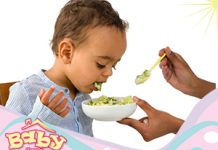Unsafe Foods You Should Avoid Feeding Baby
As your baby grows, you introduce more solid foods, fruits, and snacks to the diet. Your child is learning to eat, so; the two...
Salt in Baby’s Food
Dietary salt is an inorganic compound consisting of sodium and chloride ions. It is found naturally in many foods or added to foods because...
Finger Foods
Finger foods are small pieces of food that your baby can pick and bring to the mouth with their fingers. Giving your baby finger...
Safe Hygiene Practices for Baby’s Food
Your baby’s health is your greatest concern right now. Apart from sterilizing the utensils and every surface you place the baby on, you must...
Quantity Guidelines when feeding an infant (0-6months)
Knowing what, when, and how to feed a child is essential. For normal development, it is excellent to have all the effective ways to...
Solids Feeding Guide
Solid foods should add to, not replace, breast milk or commercial iron-fortified infant formula, which are nutritionally superior for young babies. Let your baby’s...
Guiding Principles for Complementary Feeding
1. Practice exclusive breastfeeding from birth to 6 months of age, and introduce complementary foods at 6 months of age (180 days) while continuing...
Texture Transition guide
The most suitable consistency for an infant's or young child's food depends on age and neuromuscular development of the jaws.
Beginning at 6 months, an...
Transitioning to Solids
Please note
Start by offering food 2-3 times a day.
To ensure that your baby gets enough iron, aim for at least 120 mL...
Reasons your Baby is Suddenly Rejecting Solids
In Kenya, many mothers complain of their struggle to get their baby to eat solid food at the age of seven to eight months....













